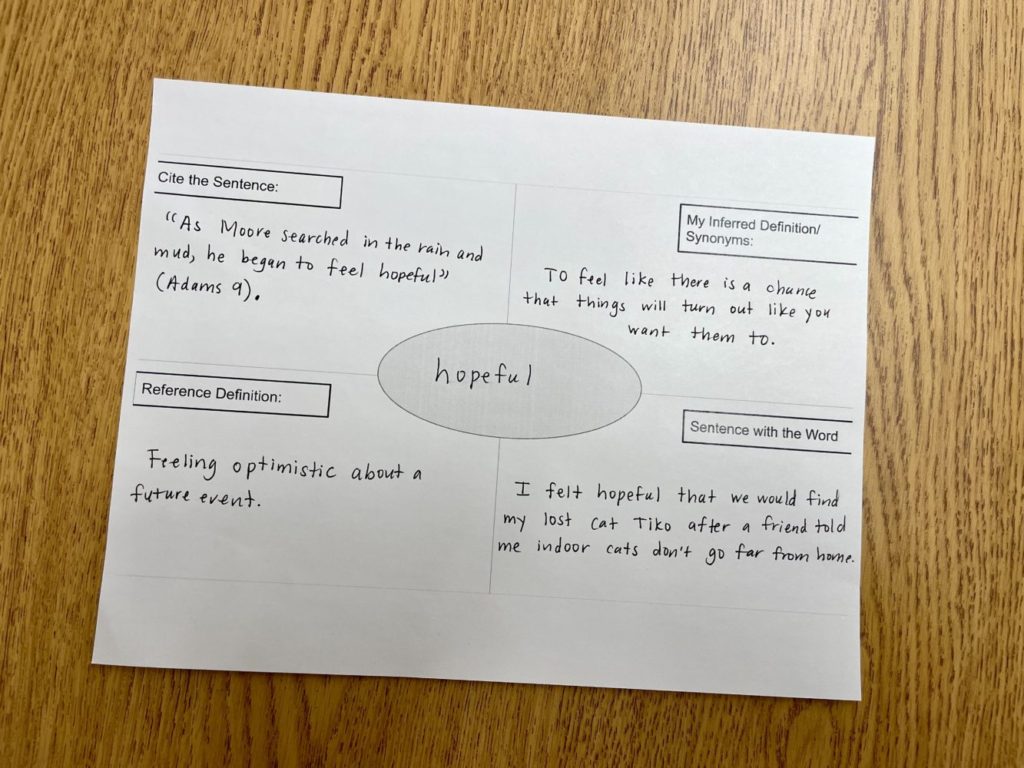When I was going to school to become an English teacher, I don’t think teaching nonfiction reading ever crossed my mind. Not once. I wanted to become an English teacher to read books with students and analyze all the elements of literature. Teaching students how to read nonfiction text? Students would read plenty of that in content area classes. Right?
Now that I teach in a 5-8 middle school, I’ve quickly realized that as an ELA teacher, I can’t gloss over nonfiction. While other content areas do incorporate nonfiction reading, I’m the one that is going to teach my students how to read nonfiction. Teaching several nonfiction reading units each school year has made me step out of my fiction-based comfort zone and realize that teaching nonfiction is fun. Not only that, students who may not shine as bright during fiction units often are able to show strengths in nonfiction units that we may have never known. Here are three things I’ve learned about teaching nonfiction reading that I would recommend implementing in any middle school language arts classroom.
Tip One: Focus on one reading strategy at a time
When I teach a nonfiction reading unit, I prefer to focus in on one reading minilesson each day. Each reading minilesson asks students to apply one reading strategy to nonfiction reading. Having a daily focus keeps reading instruction concise and productive. Students get a chance to try one reading strategy out at a time with nonfiction reading they’re processing independently.
My average reading unit lasts around 20 class days, so I would select 17-20 nonfiction reading minilessons to focus in on across those 20 days. Here are a few of my favorite nonfiction reading minilessons:
-Readers consider how an example or story the author includes about a person, event, or idea in a nonfiction text helps them better understand the topic.
-Readers identify the overall structure of a nonfiction text so they can better understand the author’s purpose for writing it.
Readers explain how an author uses evidence and reasons to support a claim in the text.
My Middle School Nonfiction Reading Unit includes 20 reading minilessons (including the three reading minilessons listed above). Each minilesson contains a lesson plans with prompts to use during interactive read aloud and reading conferences/reading strategy groups, a reference sheet specific to the reading strategy for that minilesson, an exit ticket to check student understanding, and modeled exit ticket, and a presentation to display the different steps of the minilesson to students.
Tip Two: Use Short Articles
There are so many short nonfiction articles on topics that middle school students can easily engage with. I love using short articles because it feels like we’re learning something new every day, and they’re such a departure from a long novel. Not everything in Language Arts has to be a marathon, sometimes the quick read of a short article is a great way to build students’ confidence and get them to complete reading assignments in a lower stakes way. Plus, the variety of knowledge and vocabulary that can be built through the use of well-chosen short articles is plentiful.
My favorite places to find short articles are:
–ReadWorks: You need to have a login, but it’s free and includes options for students to listen to articles.
–Newsela: You need to have a login, but it’s free.
–Tween Tribune: No login needed.
–Science Daily: No login needed.
-The New York Times: The Learning Network: You need to have a login, but it’s free.
–Scholastic Magazines: These do require a paid subscription, but the articles are awesome and rich with a variety of text features.
Tip Three: Flood Vocabulary Learning Opportunities
It seems year after year my students are coming with less and less vocabulary knowledge. A student’s vocabulary has a direct correlation to their reading comprehension. Students need as much vocabulary instruction as you have time to give them. Quick and easy ways that I like to incorporate vocabulary into nonfiction reading units are:
–Quizlet Live: I’m pretty lucky this school year to have our District Technology Coach team teaching with me. She has set up Quizlet Lives for our students with vocabulary words from articles we’re reading, and our students ADORE this competitive group game. It’s a fun way to take 5-8 minutes to start or end class.
-Words in Context: Teach students how to think about what words mean within the context of nonfiction text. Practice writing synonyms that would be interchangeable with a given word and writing student-friendly definitions for vocabulary. This is a great skill to practice in a small reading group.
–Frayer Model: We’ve all probably seen and heard of the four-box chart with the vocabulary word in the middle. It’s a great way to get students thinking deeply about words and internalizing important words. I’ve seen so many variations of this popular vocabulary activity. I took my own spin on it and will link a force link copy of the Google Doc here.






